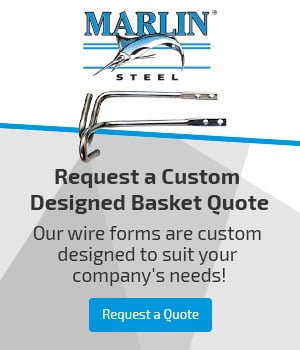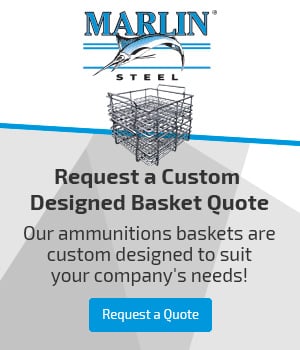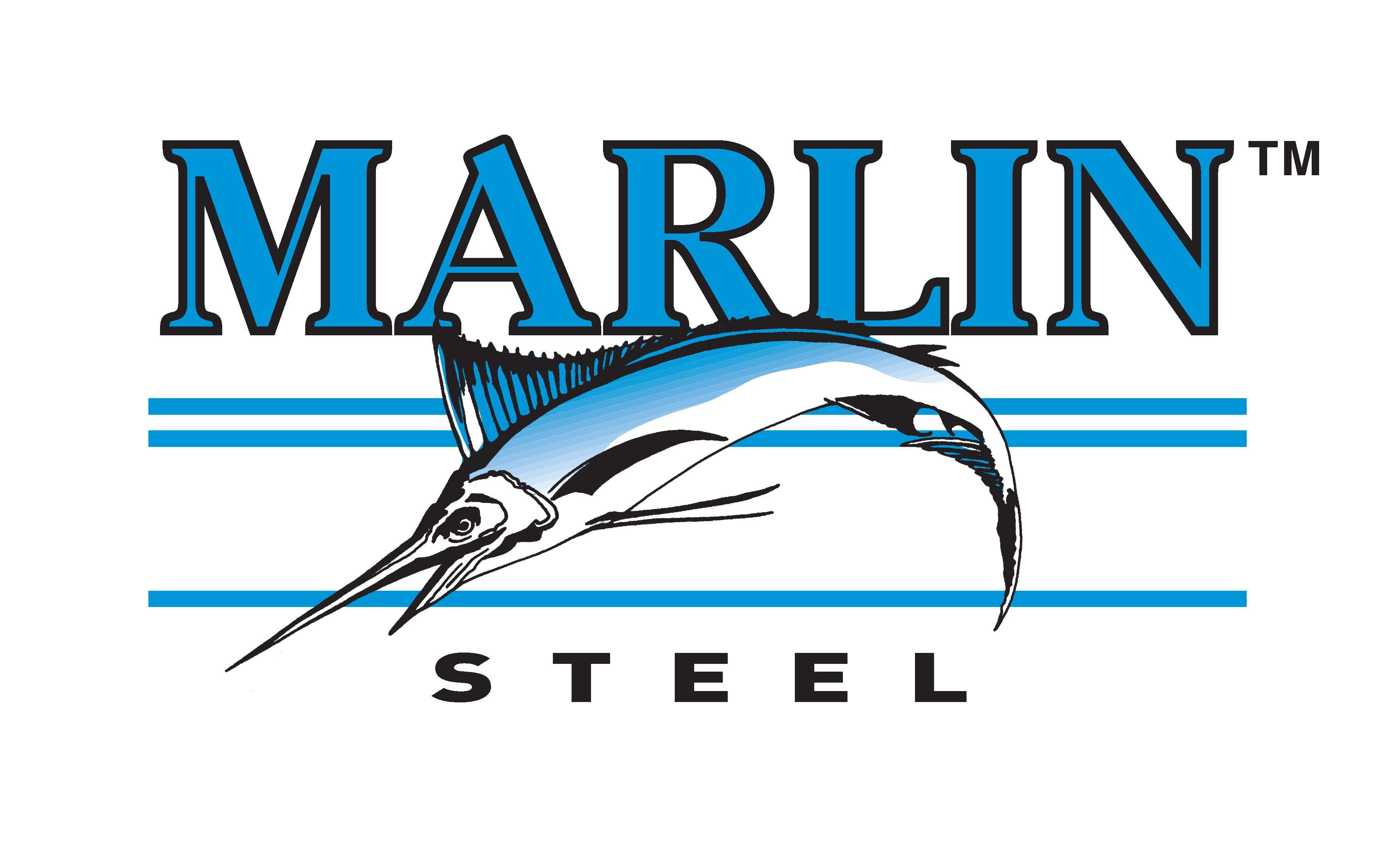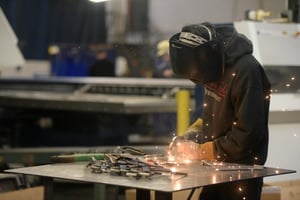
A while ago, Marlin Steel’s engineering team was asked by a client whether a stainless steel nut could be welded to a carbon steel wire form.
The short answer was “yes, you can, but you probably wouldn’t want to.” In most cases, if you need a corrosion-resistant wire form, it’s best to go all the way with stainless steel wire rather than mixing and matching metals.
How You Could Weld Dissimilar Metals
Austenitic stainless steels such as grade 304 stainless or grade 316 stainless can be welded to plain carbon steel using MIG and TIG welding. When welding stainless steel to a dissimilar metal such as plain carbon steel, weld processes such as MIG welding that use filler material are preferred.
Resistance welding of stainless and carbon steel isn’t typically done, as the differences in electrical conductivity between the two metals make reaching the right weld temperature extremely difficult. When resistance welding is used, the carbon steel is usually preheated since it’s more electrically conductive and doesn’t heat up as fast as stainless steel.
What Type of Welding is Used for Stainless Steel?
When determining what form of welding is best for your custom wire basket, the answer depends on what type of metal is being used. If your custom basket is made from stainless steel, then there are certain methods that are superior compared to others for stainless steel welding.
The properties of stainless steel have to be considered before choosing a weld. For example, Marlin Steel makes most of its custom wire baskets from grade 304 or 316 stainless steel, they are corrosive-resistant and have a high tensile strength. Chrome-nickel stainless steel alloys have a high electrical resistance and cool off fast. Since stainless steel alloys bond and solidify quickly with minimal distortion, resistance welding is the best welding technique for stainless steel.
Using a resistance weld for stainless steel welding is an easy, smoother process when compared to other metals. Due to its high resistance to current flow, heat at the weld joint is generated easier and quicker than mild steel.
Resistance welds can be completed incredibly fast since resistance welding works by passing electricity through a material and generating heat by resistance. Stainless steel tends to get up to weld temperature very quickly, which allows for quick welding. For example, Marlin’s IDEAL welding machine can complete a weld in two milliseconds (i.e. 2/1,000 of a second)—which makes it the best welder for stainless steel.
While resistance welding is similar to arc welding because both apply an electrical current to help join two pieces of metal together, it does not require a filler like arc welding. Instead, resistance welding uses pressure to bind the two materials being welded together. Resistance welding is also the best overall welding method for stainless steel since, without the use of a filler, there is much less risk of weld splatter and a much “cleaner” look to the product. Using resistance welding also reduces the risk of discoloration and burns around the weld site because a resistance-type stainless steel welding machine operates so quickly.
How to Weld Stainless Steel to Other Metals
When welding stainless steel to other metals, other types of welding should be considered than resistance welding. For instance, MIG and TIG welding are preferred types of welding stainless steel to carbon steel together. When combining dissimilar metals together, such as welding stainless steel to carbon steel, a filler material is needed to bind the two metals. In MIG welding, a continuously-fed electrode wire melts into the weld, enabling two dissimilar metals to be joined without heating them to their melting points.
When welding stainless steel with MIG processes, the team at Marlin Steel programs a MIG welding robot to complete the weld. A filler must be used since the melting points of the two dissimilar metals may be very different. For instance, if one of the metals is overheated to reach the melting point of the other one, stress cracks and microfractures may result. Welding two dissimilar metals is possible, but a very difficult process with plenty of complications.
Reasons You Want to Avoid Welding Stainless Steel to Carbon Steel
- Difficulty. Combining dissimilar metals together, such as welding stainless steel to carbon steel, adds extra challenges to the process. This translates into increased labor, rejection/error rates, and costs.
- Hot Cracking of the Stainless Steel. Because it is more electrically-resistant than carbon steel, welding stainless steel with resistance welding heats up the metal much faster than with carbon steel. While waiting for the carbon steel to reach weld temperature, the stainless can overheat and become riddled with hot cracks. Using filler-based welding or preheating the plain steel can ameliorate this, but these methods aren’t perfect.
- Thermal Expansion in High Temperature Service Conditions. Another problem with using dissimilar metals in a welded wire form is that thermal expansion from heat will affect each metal differently. This difference in expansion rates between the two metals can cause extra fatigue to the welded joint—reducing the wire form’s structural integrity and useful life.
- Increased Bimetallic Corrosion. One of the reasons you generally want to use stainless steel is because of its strong corrosion resistance. An uncovered weld of plain and stainless steel that is exposed to extreme corrosive conditions, such as immersion in saltwater, could cause corrosion. This is because the intermingling of plain steel particles with the stainless alloy compromises the protective oxide layer of the stainless, allowing rust to form.
- Reduced Weld Strength. Another problem with joining dissimilar metals is that it can lead to weaker welds—even with filler-based welding methods. The differences in weld temperatures and operational tolerances alone can easily compromise the strength of the welded joint.
To boil it down, welding dissimilar metals together is difficult to do right, and often produces inferior results to using metal alloys that are similar or the same.
By taking into account the long-term effects of using different metal alloys in a custom wire form, you can make sure that you get the right basket for the job.
If you have a question about stainless steel welding, wire forming issues, or need a custom wire form for a high-precision application with strict tolerance requirements, be sure to contact an experienced mechanical engineer!

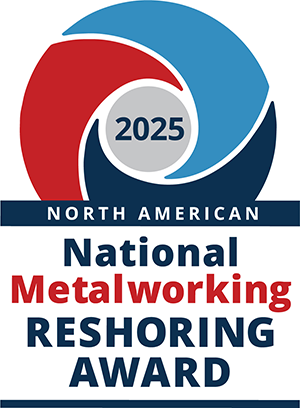






.gif)
